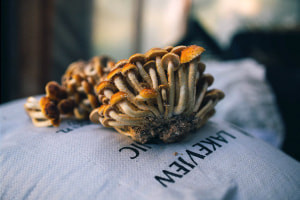Microorganisms come in a wide variety of shapes and sizes, which has led to the development of taxonomy as a system for classifying and naming them. This course will show you the taxonomy of living things, the group to which mushrooms belong and their evolution over time. Many creatures, including mushrooms, have different methods of feeding, some of which include interaction with other organisms, either plant or animal. We teach you how to classify mushrooms according to their mode of nutrition and how to feed them. Mushrooms have been around for a long time and humans have consumed edible mushrooms in the past. However, not all are edible. What characteristics should you look for while recognizing edible mushrooms? In this course, we explore the different features that you can find in edible mushrooms.
Mushrooms grow in specific habitats and when hunting mushrooms, one must be familiar with the particular places they grow. This course highlights mushroom-hunting methods and techniques, the optimal time to go mushroom hunting and the essential equipment required. Temperature, soil composition and other factors influence mushroom growth and development in their natural habitat. We will examine the essential and nutritional aspects that mushrooms require to survive in their natural environments. We'll work through the most critical nutritional factors and apply them to ensure optimal mushroom development, both indoors and outdoors. Culture media are platforms to grow nutrified mushrooms and require the right ingredients to make mushrooms grow. This course explores the steps and ingredients you use to make various culture media for mushrooms to grow in.
The next section of this course goes through the various forms of culture media and the recipes for preparing them. You'll learn about agar media, its components or formula and how to prepare it for large-scale mushroom production. We discuss other processes such as subculturing, subbing and supplementation at casing to enhance mushroom growth. The course analyzes the concept of mushroom spawning and the elements required in the spawning process. Finally, we look at the composting process of mushrooms, each stage of the composting process, the role of water and oxygen in the composting process and the key raw materials for the composting process. This course does not require any prior expertise. It is intended for those who wish to know about mushroom farming. Do you want to acquire the skills and methods needed for mushroom farming? Enrol now and get started on this course.
What You Will Learn In This Free Course
View All Learning Outcomes View Less All Alison courses are free to enrol study and complete. To successfully complete this course and become an Alison Graduate, you need to achieve 80% or higher in each course assessment. Once you have completed this course, you have the option to acquire an official , which is a great way to share your achievement with the world.
Your Alison is:
- Ideal for sharing with potential employers
- Great for your CV, professional social media profiles and job applications.
- An indication of your commitment to continuously learn, upskill & achieve high results.
- An incentive for you to continue empowering yourself through lifelong learning.
Alison offers 3 types of s for completed courses:
- Digital : a downloadable in PDF format immediately available to you when you complete your purchase.
- : a physical version of your officially branded and security-marked
All s are available to purchase through the Alison Shop. For more information on purchasing Alison , please visit our FAQs. If you decide not to purchase your Alison , you can still demonstrate your achievement by sharing your Learner Record or Learner Achievement Verification, both of which are accessible from your Account Settings.














 Avg Hours
Avg Hours CPD Accredited
CPD Accredited
 Total XP:
Total XP: 
 Knowledge & Skills You Will Learn
Knowledge & Skills You Will Learn







